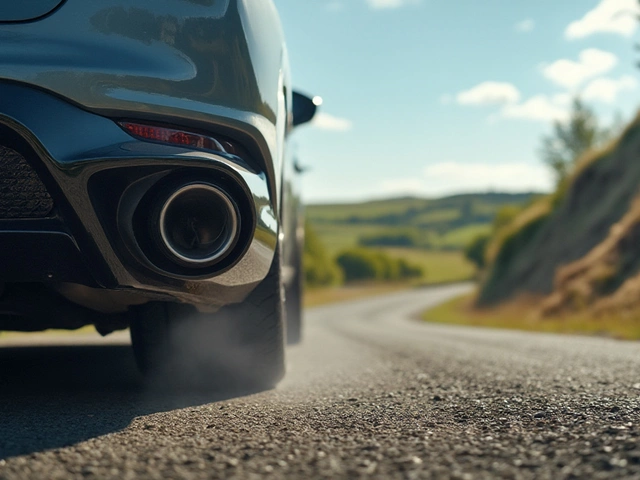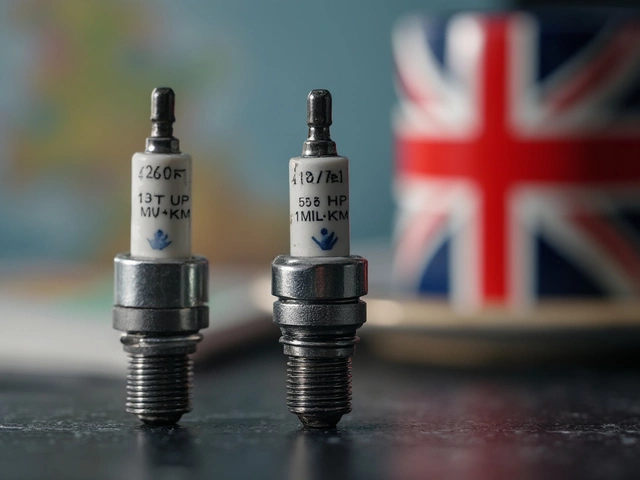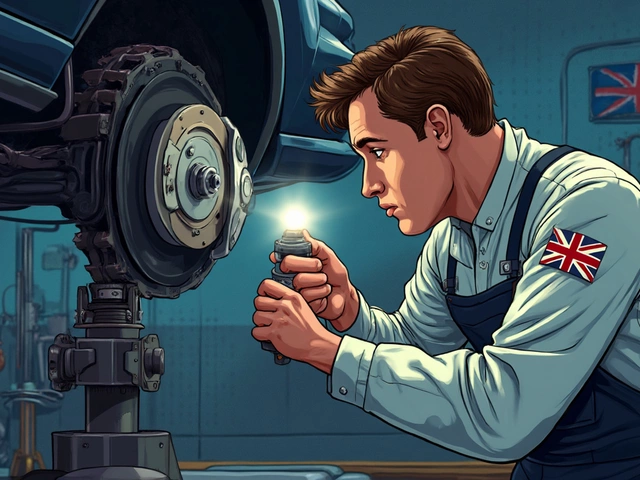So, you're toying with the idea of upgrading your car's radiator. But, is it really worth the investment? This is a common curiosity among car enthusiasts and everyday drivers alike. In short, swapping out your old radiator for a snazzier model can do wonders in terms of performance and reliability, especially if you're experiencing cooling issues.
Consider this: a radiator isn't just some mundane car part. It's key to keeping your engine running smoothly by dissipating heat effectively. A well-functioning radiator means you won't find yourself stranded on the roadside with steam billowing out from under your hood. But how do you know if an upgrade is right for you? And what should you look for in a new radiator? Let's explore.
Why Consider Upgrading?
Thinking about upgrading your car radiators? Well, it's not merely about keeping things cool under the hood. A good radiator upgrade can boost your ride's performance, especially if tuning or heavy usage strains your current system. Let's dive into why you might want to give it some thought.
Enhanced Cooling Efficiency
Old or stock radiators often can't handle the heat produced by high-powered or modified engines efficiently. Upgrading means better cooling performance, which can help prevent overheating issues during those long drives or in hot weather. A solid radiator keeps your engine's temperature stable, prolonging its life.
Better Materials
Many factory-installed radiators are made from plastic and aluminum, which can wear out faster. High-performance radiators often use better materials like aluminum and copper, enabling stronger build and more effective heat transfer. This boost in quality means less frequent replacements and repairs.
Improved Engine Performance
If you're into motor sports or simply want a peppier response from your vehicle, an upgraded radiator can support higher engine outputs. Better cooling means less engine heat buildup, allowing more efficient and sustainable power delivery.
Cost Efficiency in the Long Run
True, an upgrade costs a bit up front, but think of it as an investment. You'll likely avoid frequent maintenance fees and the hassle of sudden breakdowns. And in some cases, a high-performance radiator can even improve your car's fuel efficiency.
If you're unsure about needing an upgrade, consider this: if your temperature gauge is regularly inching toward the red, it might be time for a change. Ultimately, upgrading is about matching your radiator to your driving needs, ensuring your car stays cool under pressure.
Types of Radiators
When you're considering a radiator upgrade, it pays to know what types are out there. After all, not all radiators are created equal, and understanding the different types can help you choose the right one for your car's engine cooling needs.
Aluminum Radiators
One of the most popular types these days is the aluminum radiator. They’re lightweight and have excellent cooling efficiency, making them a favorite among racing enthusiasts. Aluminum radiators also tend to be more resistant to corrosion than their counterparts, which means they usually last longer. Not to mention, they often come with sleek designs, which is a minor perk if you're into aesthetics.
Copper-Brass Radiators
These have been around for ages, and for good reason. Copper-brass radiators boast effective heat transfer capabilities, which can be crucial for your engine cooling. They’re also easier to repair if damaged. However, they're generally heavier than aluminum radiators and might not suit performance cars looking for every bit of weight reduction.
Plastic and Aluminum Composite Radiators
For many modern vehicles, manufacturers opt for plastic tanks with aluminum cores. These are often lighter and more cost-effective for everyday cars while still offering decent cooling. But, they might not be as durable long-term, especially if the plastic components start to crack under heat over time.
Downflow vs. Crossflow Radiators
Another distinction comes in the form of flow type. Downflow radiators have tanks at the top and bottom, with coolant flowing down. Crossflow designs, on the other hand, have tanks on the sides, allowing coolant to flow across the radiator. The latter is often used in newer car models because they tend to be more efficient at dissipating heat.
| Material | Weight |
|---|---|
| Aluminum | Light |
| Copper-Brass | Heavy |
| Plastic-Aluminum | Medium |
Every type of radiator has its pros and cons, so it's crucial to measure what matters most to you: budget, performance, or longevity. Whether it’s the durable copper-brass option or the lightweight, efficient aluminum, there’s a radiator that’ll fit your car like a glove.

Signs You Need an Upgrade
Recognizing when it's time for a new car radiator can save you big time. While some issues can be resolved with basic maintenance, other signs scream 'upgrade needed!' Let's dive into those.
1. Frequent Overheating
One of the most obvious signs is constant engine overheating. If you've noticed your temperature needle frequently flirting with the red zone, the cooling system isn't cutting it. A fresh, more efficient radiator could be the remedy.
2. Coolant Leaks
Inspect your car regularly. Notice any puddles underneath after parking? These might be coolant leaks. A leaky radiator can't efficiently manage engine heat, putting your engine at risk.
3. Discolored Coolant
Healthy coolant is usually bright green, yellow, or pink. If it looks rusty or murky, that's a sign of corrosion or internal damage within the radiator, indicating it might be time for an upgrade.
4. Aged Radiator
Most radiators last between 8 to 10 years. If your radiator is reaching or surpassing this age, don't wait for it to fail during peak traffic. Consider upgrading to a more robust model.
5. Increased Engine Strain
If you're noticing a drop in performance or frequent strange noises, your engine might be working harder than it should. An inefficient radiator could be part of the problem.
Remember, not all upgrades are mandatory. However, if these signs persist, upgrading might save you more trouble in the long run. It's about ensuring your engine's longevity and maintaining reliable performance.
Maintenance Tips
Keeping your car’s radiators in tip-top shape doesn't have to be rocket science. Let’s look at a few straightforward maintenance tips that can make a world of difference.
Regular Coolant Checks
The coolant in your radiator is like the lifeblood of your engine's cooling system. So checking its level regularly is crucial. Make sure it’s topped up to the right level. Not too little, not too much—just right! And don’t forget to use the correct type of coolant for your car model.
Inspect and Clean the Radiator
You’d be surprised at how much dirt and debris can get stuck in the radiator fins. This can seriously reduce its cooling efficiency. A regular inspection and occasional cleaning of your radiator using a garden hose can help keep it free from blockages.
- Check for any visible damage.
- Look out for dirt buildup.
- Use a hose to gently rinse the fins.
Keep an Eye on Temperature Gauges
Your car’s temperature gauge is your best friend when it comes to spotting cooling issues early. If you notice it creeping up into the red, it’s time to investigate. Ignoring it could lead to overheating.
Listen for Unusual Sounds
Strange noises coming from your radiator or the engine bay can be signs of trouble. Bubbling or hissing might indicate a leak or an issue with coolant circulation. Catch it early, and it’s easier (and cheaper!) to fix.
Schedule Regular Professional Inspections
Even if you're a diligent DIYer, getting a pro to give your car's cooling system a once-over now and then is a smart move. They can spot issues you might miss and provide essential maintenance advice.
Engine cooling is crucial for your car's health. A well-maintained radiator ensures your engine stays cool, preventing costly repairs down the line. Follow these tips, and you’ll be cruising smoothly for miles to come.





